This story has been updated since it was originally posted to include more expert insight.
As we age, everyone naturally experiences the loss of elasticity in their skin. However, with treatment and meticulous skincare, sagging skin can begin to appear more vibrant and healthy.
If you’re seeing a difference in your previously glowing and youthful skin and don’t know where to begin when it comes to your neck, we reached out to several dermatologists for advice.
We gathered a list of four, doctor-approved solutions for sagging skin, so if you’re wondering what causes skin to gradually lose its radiance and how to stop it in its tracks, read on.


Firstly, what causes skin to sag?
Apart from normal and inevitable sagging due to aging, there are other contributing factors that can cause your skin to look noticeably different. Board-certified dermatologist Dr. Barry Goldman, MD told SheFinds that there are two different terms to describe cutaneous aging of the skin— intrinsic and extrinsic.
"Intrinsic aging happens to everyone and refers to a gradual fraying of the collagen and elastic fibers that hold our skin in place," Goldman says. "This leads to redundant skin, loose eyelid and neck skin, and jowls."
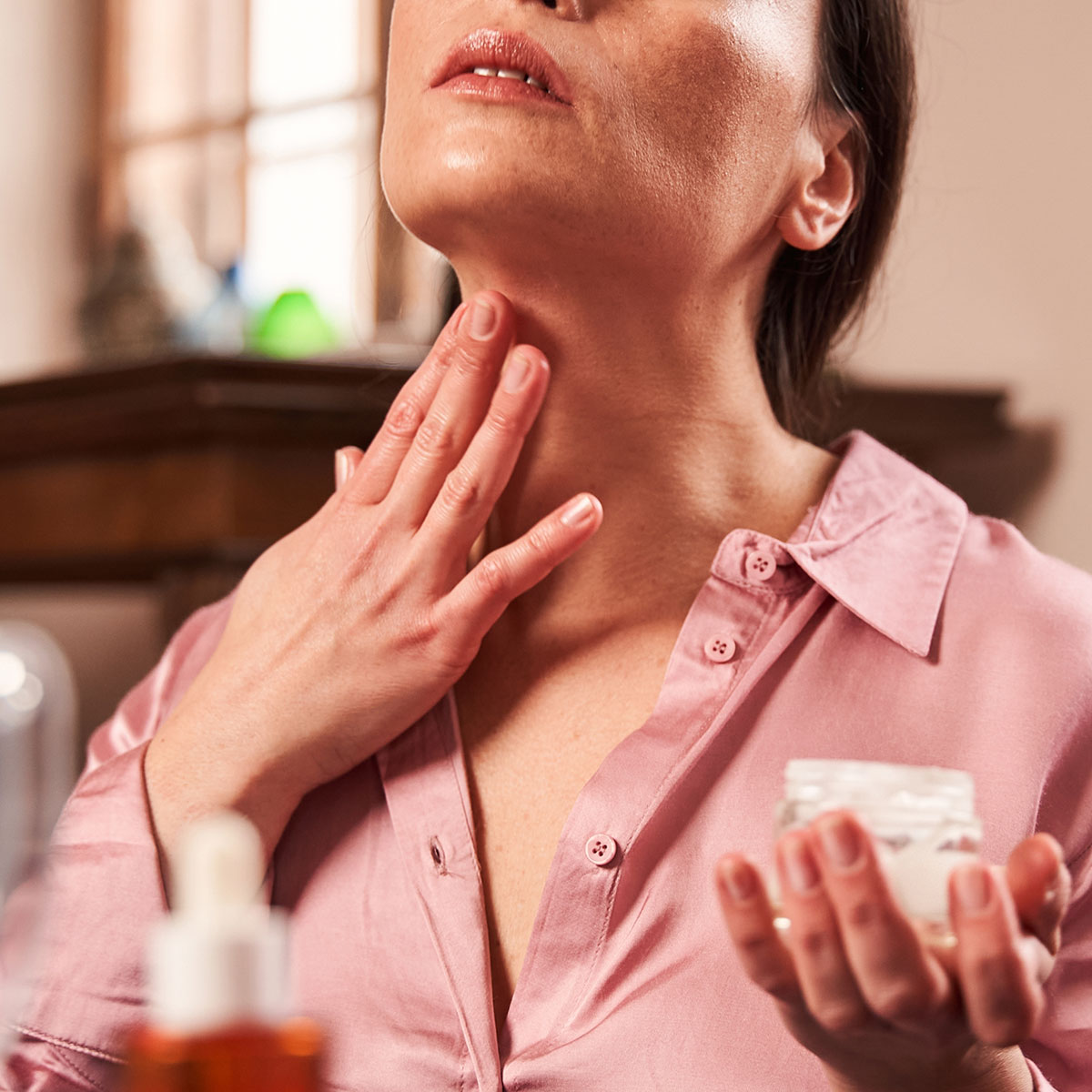
"There is also a loss of subcutaneous fat or adipose tissue that makes our cheeks sag," he adds, "It’s difficult to keep weight off as we age without losing some fat in the face, sometimes giving a draped or hanging skin appearance." Major weight changes, he says, can also lead to saggy skin.
"Extrinsic aging refers to external forces more under our control," Goldman says, explaining that a major enemy to ideal skin is "ultraviolet light which accelerates fraying of collagen and elastic fibers." He continues, "It can be seen under the microscope and has its own name, solar elastosis."
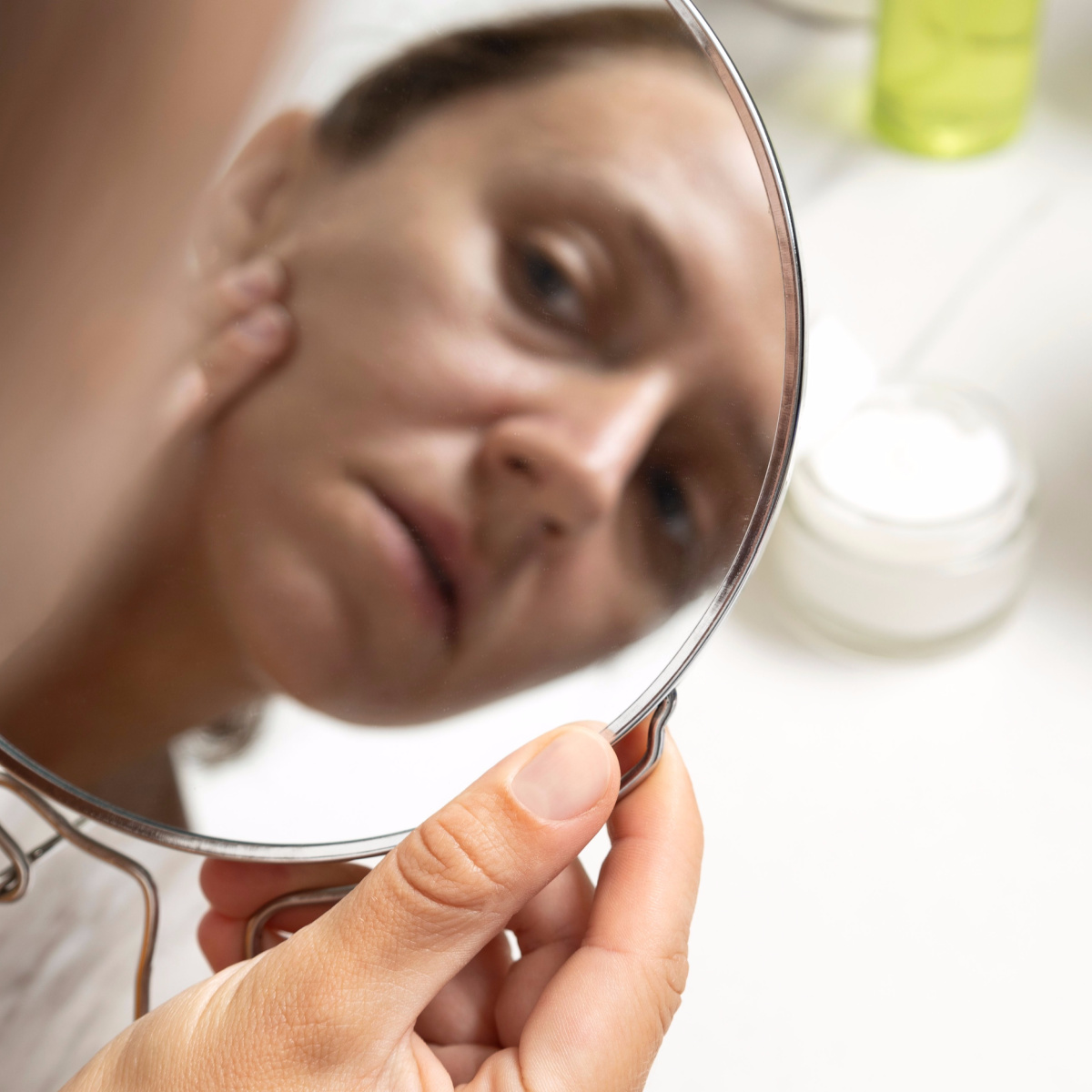
Board-certified dermatologist, Dr. Anna Chacon also advises against extreme sun and ultraviolet (UV) light exposure. "Exposure to sunlight is the single biggest culprit in aging skin," she says.
"Over time, the sun's ultraviolet light damages certain fibers in the skin called elastin. The breakdown of elastin fibers causes the skin to sag, stretch, and lose its ability to snap back after stretching," she adds.
Now, with information regarding what causes sagging skin apart from natural aging, knowing how to combat it comes much easier.

4 Tips To Combat Sagging Skin On Your Neck
After taking the causes of drooping skin into account, we reached out to cosmetic physician and skincare expert, Dr. Stanley Kovak, MD for four main tips and solutions to sagging skin.
This advice doesn't involve major surgery or expensive treatments, making it more accessible for daily practice. Changes to your routine— whether major or minor— will impact your skin and the extent to which it sags.
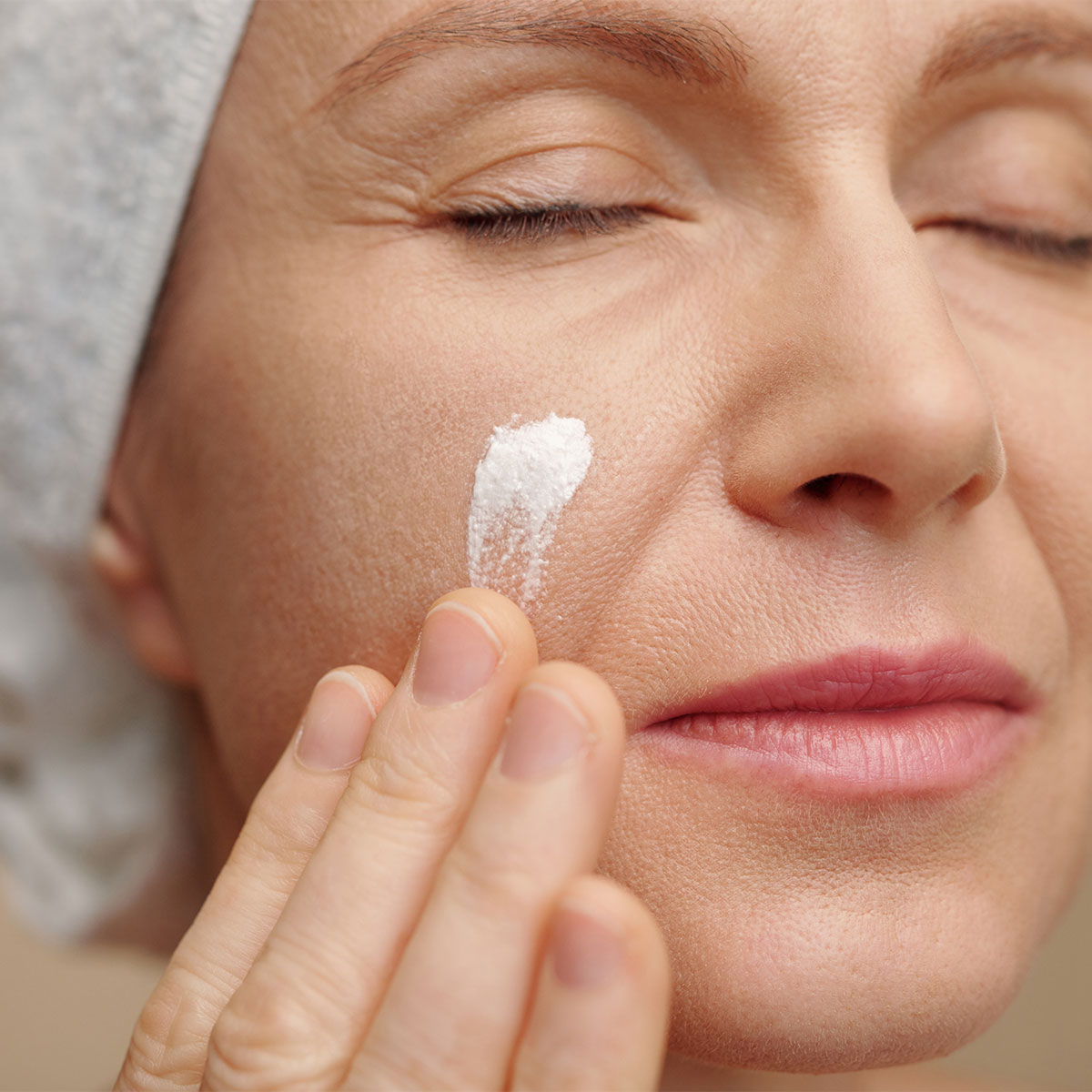
1. Minimize Sun Exposure and Use Sunscreen Daily
Dr. Kovak's first tip is to stay out of the sunlight (however tempting that warmth may be) whenever possible. This doesn't mean you have to stay cooped up or completely avoid it— he advises lathering up on facial sunscreen every day to prevent major sun damage. "Limiting your sun exposure supports healthy skin, diminishes the likelihood of skin damage such as sun spots or actinic keratosis, and reduces the potential for skin cancers," says Kovak.
The skin is your largest organ, Kovak stresses, and taking care of it includes a daily sunscreen. "A physical, mineral sunscreen (not chemical) is critical to protecting your skin, and should be applied daily, not just when you're going to the beach," he says. Read on to learn about what happens when you don't wear sunscreen!

2. Stop Smoking Immediately
If you smoke, it doesn't benefit your skin whether it's beginning to sag or not. "Smoking diminishes your overall health, so avoid it," Kovak says. "Smoking can damage your skin and lead to premature aging of the tissue, which will appear as wrinkles, dry and rough skin, sagging skin, and other symptoms."
If you are smoking, stopping right away can halt the damage to your skin, as well as the many other negative health effects from smoking, Kovak lists, such as the potential for "strokes, coronary heart disease, cardiovascular disease, and cancer." Overall, there are no health benefits to smoking, and that includes your skin.

3. Limit Alcohol Intake
Drinking alcohol isn't so detrimental to the point where you have to stop *completely,* but Kovak advises against excessive consumption for better skin.
"Limiting your alcohol consumption can prevent premature aging of the skin," Kovak says. "Excessive alcohol intake, such as binge drinking, accelerates aging of the tissue."
This, he says, leads to the symptoms described above (e.g., sagging skin), as well as "numerous other negative health effects," such as "high blood pressure, heart disease, strokes, liver disease, a weakened immune system, mental health disorders (e.g., depression, anxiety, etc.), and cancers."
Alcohol really doesn't serve a healing purpose for sagging skin, so limiting it is another good place to start when treating your skin with care.
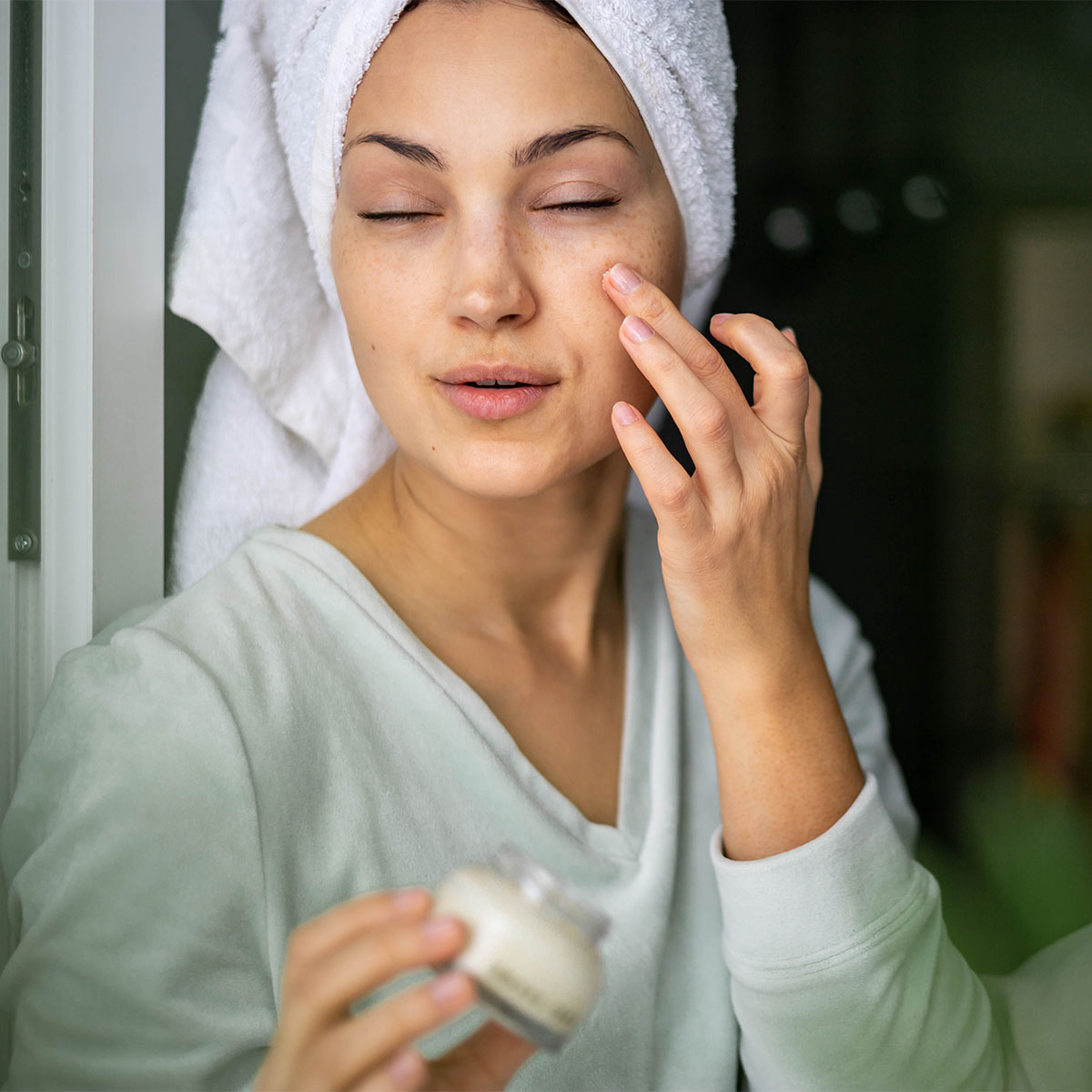
4. Commit to a Morning and Night Skincare Routine
A consistent routine will help sagging skin immensely, as Kovak says, "The more protective you are of your skin, the longer you'll be able to keep your skin healthy, which can reduce stress, anxiety, and even depression. Healthy skin is vital, it protects you and will help you look, feel, and be healthier."
Speaking to your doctor and dermatologist is a great way to start incorporating crucial products into your routine. Cleansing and washing your face, and using a daily moisturizer, sunscreen, and Vitamin C serum are important morning steps for healthy skin. For tips specific to your situation and sagging skin symptoms, it is best to contact a doctor directly.
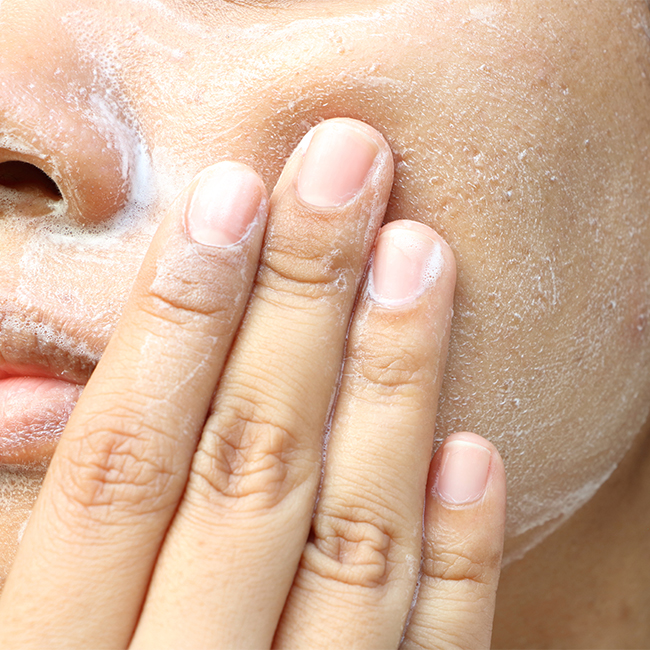
Healthy skin starts with prevention and maintenance," Dr. Kovak says, and this also includes a nighttime routine. Removing makeup, cleansing, and using moisturizer and hyaluronic acid are common elements to be included in your evening skincare routine.
Fellow board-certified dermatologist, Dr. Kellie Reed, MD, told SheFinds that retinol is another addition to your routine that can soothe sagging skin.
"While no cream can truly lift sagging skin, good skincare can certainly help with skin texture and some products can help stimulate collagen," Reed says. "If retinol is not part of your routine yet, it’s time to incorporate this ingredient which helps with fine lines and stimulates collagen."

While Reed explains that there are no "overnight results with this ingredient" (or any ingredient for that matter), if you use it "consistently over the years," your skin will reflect this.
So, ultimately, if you notice that your skin is sagging, it's firstly important to know it's nothing to be ashamed of as it's a part of normal aging. Next, take note of its other causes and see if you can make lifestyle changes and adjustments to stop contributing to the natural effects of aging.
This includes a daily routine for yourself and contacting your dermatologist for more information. Everyone ages, so a helpful mindset to have is to age *gracefully* and find what works for you and your skin!


























